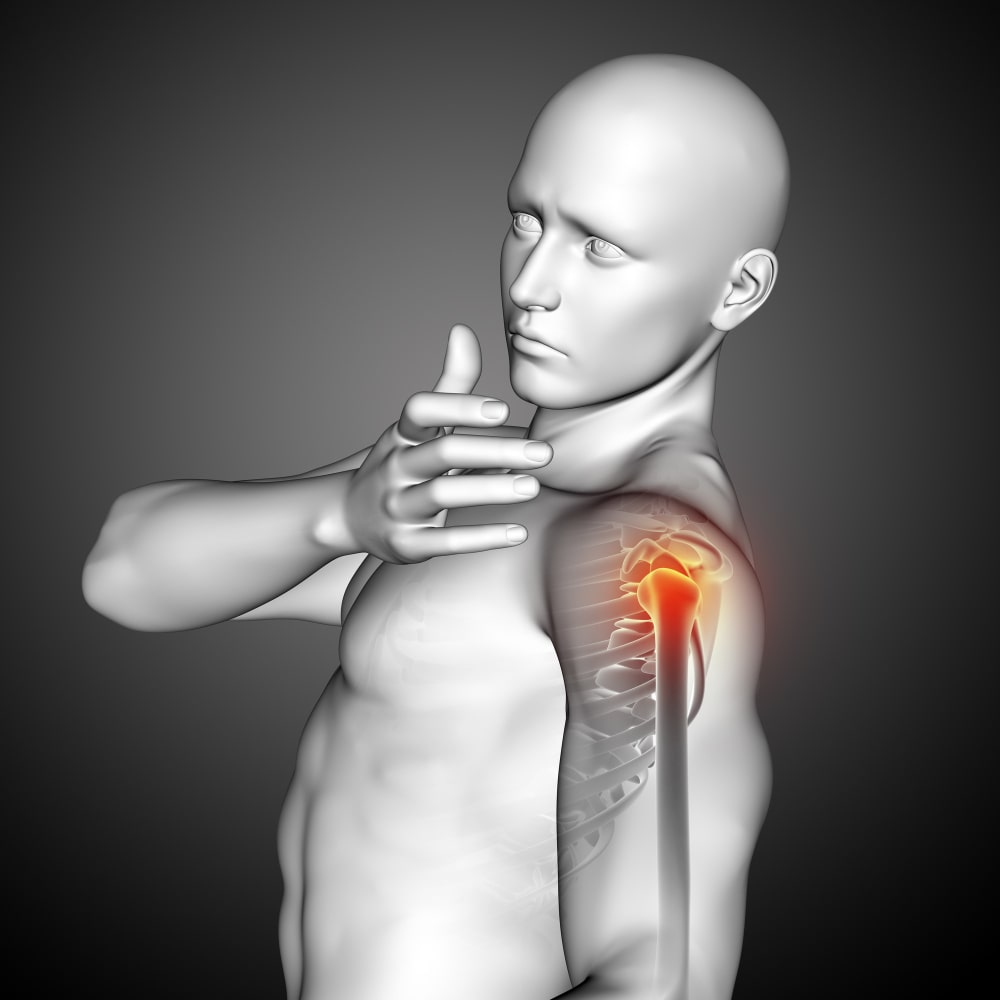Shoulder Replacement Surgery
What is shoulder replacement surgery?

Causes of shoulder replacement surgery.
- Osteoarthritis – Osteoarthritis breaks down the cartilage and the bone in the shoulders causing severe trauma and pain. It usually affects middle aged or elderly people.
- Rheumatoid arthritis – Rheumatoid arthritis causes inflammation which results in stiffness and pain in the shoulders.
- Post-Traumatic arthritis – It is caused by severe injuries to your joint that can damage the cartilage which results in stiffness and pain in the shoulders.
- Osteonecrosis – Osteonecrosis prevents a proper blood flow to the humerus which can cause severe bone damage even causing it to collapse.
- Injuries – Injuries can damage the cartilage and bone in the shoulder joint.
- Fractures – Fractures usually require replacement as they can further lead to ruptures or damage of the cartilage in the shoulder joint, if left untreated.
Anatomy of the shoulder
Ideal candidates for shoulder replacement surgery?
- People with shoulder arthritis pain that does not heal or cure even with various medications and treatments.
- People with extreme stiffness in the shoulder.
- People experiencing a rupture like pain in the shoulders when they move their shoulders should consider the surgery.
- People who have a disability should not opt for the surgery.
- Anybody with illnesses or nerve diseases should stay away from the surgery.
At initial consultation
Instructions before surgery.
- A complete physical examination of your body will be done.
- Various scans and X-Rays of your shoulder will be taken.
- You will be required to stop smoking weeks prior to the surgery.
- Using aspirin or any anti-inflammatory medicines and drugs should be stopped prior to the surgery as it can interfere with the healing process of the wound.
Procedure
Step 1 – General anesthesia will be given to the patient.
Step 2 – An incision starting from the top front of your shoulder to the deltoid muscle is made. The incision is usually about 6mm in length.
Step 3 – The humeral head that is damaged will then be analyzed and replaced with implants. The type of implants would have been discussed prior to the surgery during your consultation with the doctor.
Step 4 – The prosthetics or implants can either be cemented with surgical cement or can be fixed with other components.
Step 5 – The incisions are then closed with dissolvable sutures or stitches accordingly.
Most people prefer a metal ball as the humeral replacement with a metal on plastic implants as it is more convenient and compatible.
Instructions after surgery
- You will be taken to the recovery room and kept under observation for a few hours post op.
- You will be advised to use the sling support for your shoulders to keep the implants in place.
- No lifting heavy weights that can cause too much pressure on the shoulders.
- Very light and gentle movements or exercises would be suggested for a speedy recovery.
- You will not be allowed to smoke or consume alcohol.
- Regularly attend the follow up sessions with your doctor.
- Take the medications prescribed by the doctor in a timely manner.
- Maintain proper hygiene to avoid any kinds of infections.
Side effects of the surgery
Some of the possible side effects or risks of the surgery include-
dislocation of the joint
- Infections
- Nerve damage or injury.
- Fractures.
- Loosening of the implants
- Blood clots
